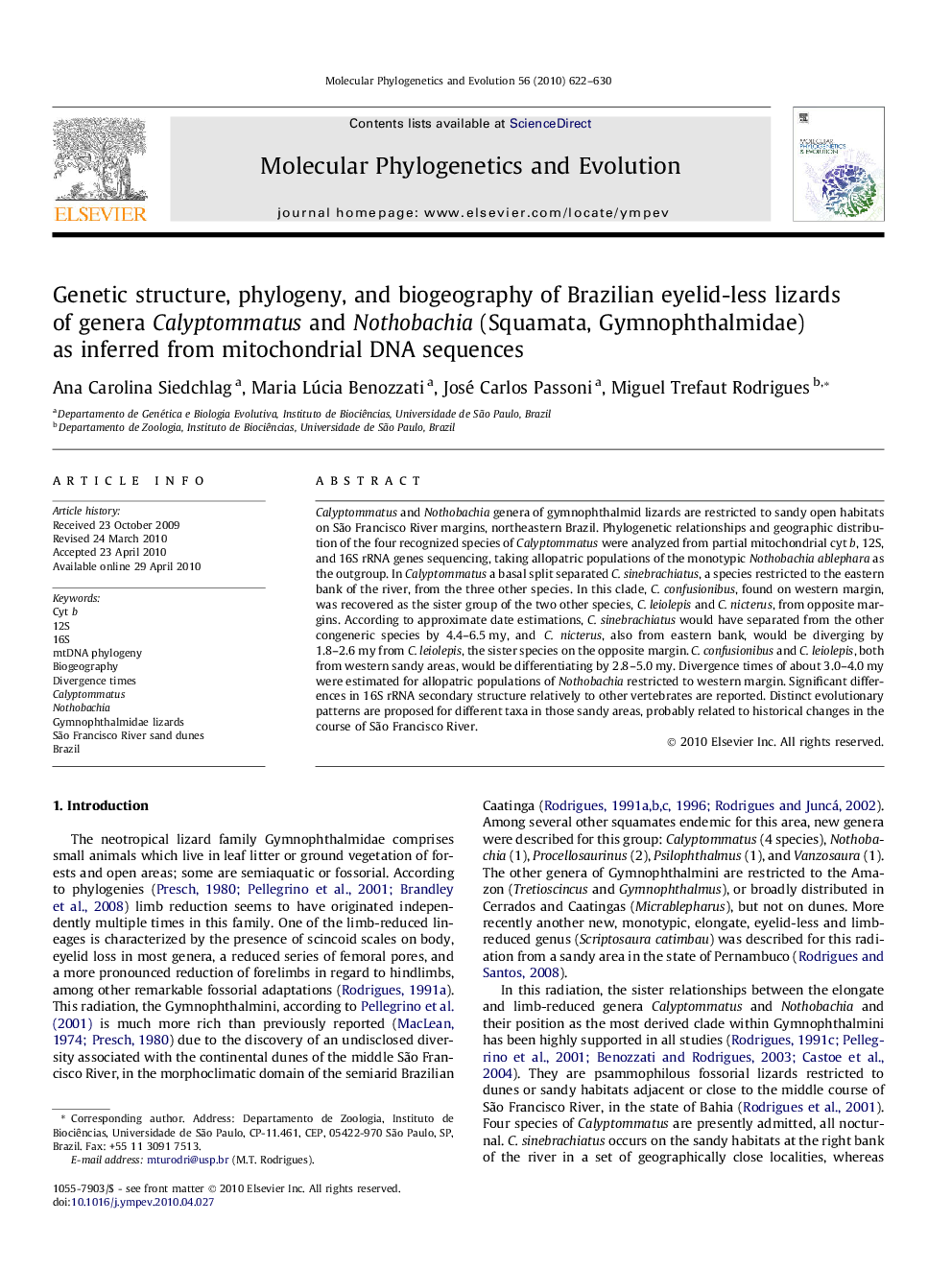| Article ID | Journal | Published Year | Pages | File Type |
|---|---|---|---|---|
| 2834511 | Molecular Phylogenetics and Evolution | 2010 | 9 Pages |
Calyptommatus and Nothobachia genera of gymnophthalmid lizards are restricted to sandy open habitats on São Francisco River margins, northeastern Brazil. Phylogenetic relationships and geographic distribution of the four recognized species of Calyptommatus were analyzed from partial mitochondrial cyt b, 12S, and 16S rRNA genes sequencing, taking allopatric populations of the monotypic Nothobachia ablephara as the outgroup. In Calyptommatus a basal split separated C. sinebrachiatus, a species restricted to the eastern bank of the river, from the three other species. In this clade, C. confusionibus, found on western margin, was recovered as the sister group of the two other species, C. leiolepis and C. nicterus, from opposite margins. According to approximate date estimations, C. sinebrachiatus would have separated from the other congeneric species by 4.4–6.5 my, and C. nicterus, also from eastern bank, would be diverging by 1.8–2.6 my from C. leiolepis, the sister species on the opposite margin. C. confusionibus and C. leiolepis, both from western sandy areas, would be differentiating by 2.8–5.0 my. Divergence times of about 3.0–4.0 my were estimated for allopatric populations of Nothobachia restricted to western margin. Significant differences in 16S rRNA secondary structure relatively to other vertebrates are reported. Distinct evolutionary patterns are proposed for different taxa in those sandy areas, probably related to historical changes in the course of São Francisco River.
